Kabocha squash is all the rage these days. It's a Japanese pumpkin that's gaining popularity in the US, and has a sweet, nutty flavor. It can be used in both sweet and savory dishes. So, if you're wondering how to roast kabocha squash, look no further! This comprehensive guide will teach you everything you need to know! Plus, make sure to check out these 25+ amazing kabocha squash recipes if you want to try different flavor combinations!
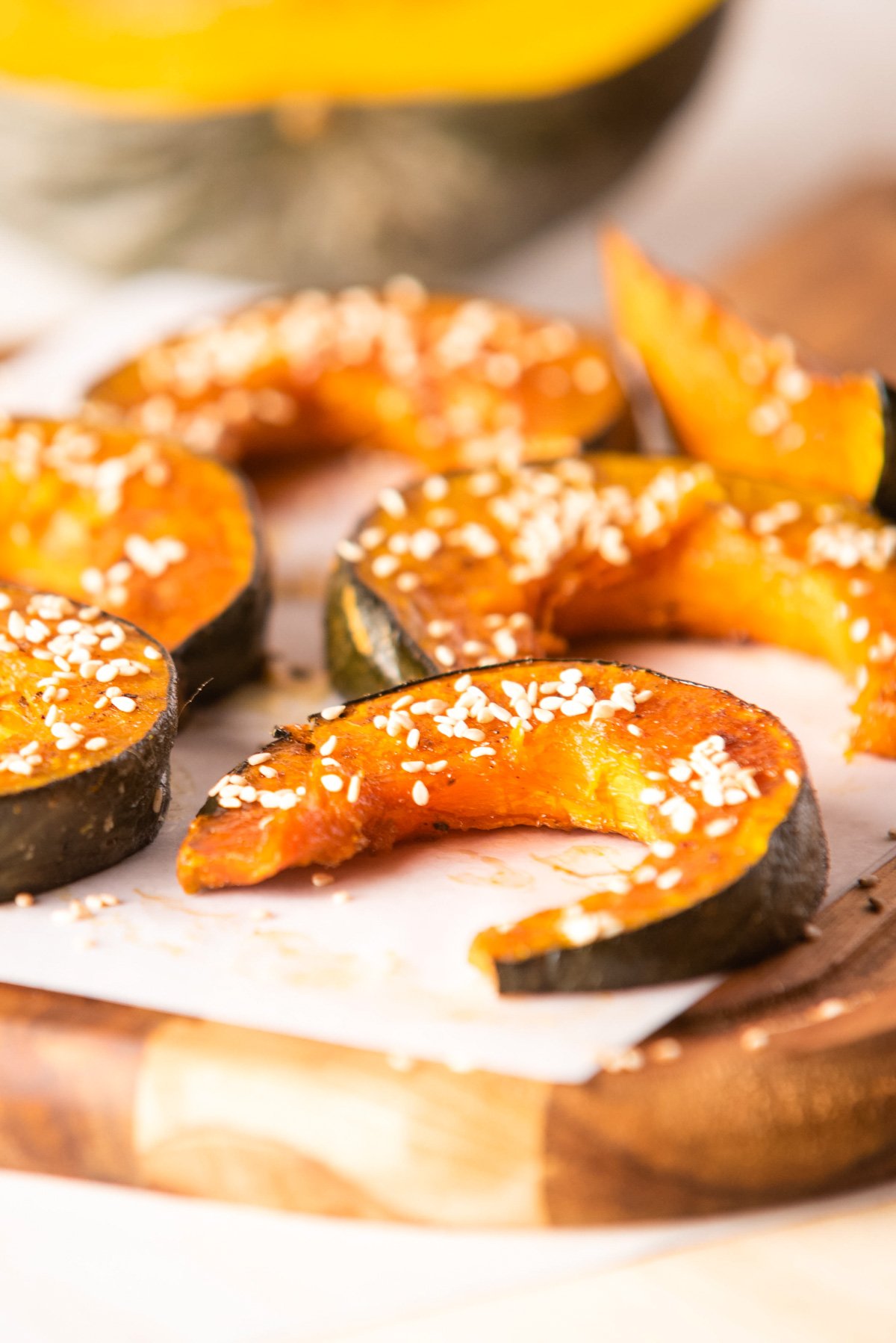
This post contains helpful tips and tricks! If you're in a rush, please use the "Jump to Recipe" below!
💭 Why you'll love this recipe
Roasted kabocha squash is truly the best part of fall season and one of my favorite winter squashes (even more than butternut squash!) This humble veggie is often overshadowed by pumpkins and acorn squash.
But in reality, roasted kabocha squash is absolutely delicious. Here are three reasons why you should give roasted kabocha squash a try this autumn.
- It's buttery without being fattening: Kabocha squash has a rich, buttery texture that makes it taste like an indulgent treat, but it's quite healthy. One cup of roasted kabocha squash contains only about 80 calories, and is packed with nutrients (vitamins A and C, beta carotene, potassium, and fiber).
- It's super versatile. You can either eat roasted kabocha squash as-is, or you can use it in sweet dishes like pies and muffins, or savory dishes like soups and stews. You can even puree it and use it to replace pumpkin puree!
- Most importantly, it's absolutely delicious. Its rich flavor pairs well with both sweet and savory ingredients, so you can get creative in the kitchen and come up with all sorts of tasty dishes. Plus, roasting it actually intensifies the natural nutty and sweet flavors, so it's literally great with just some salt and pepper!
📋 Ingredients and notes
To roast kabocha squash, you'll need: kabocha squash (approximately a pound) and olive oil. I've seasoned this recipe with maple syrup, tamari, ground ginger, sesame seeds (for garnish) and salt and black pepper.
- This is vegan + gluten-free as written, but you can swap maple syrup with honey or tamari with soy sauce if it suits your dietary needs!
- I use sea salt to season the kabocha squash but you can use regular table salt as well.
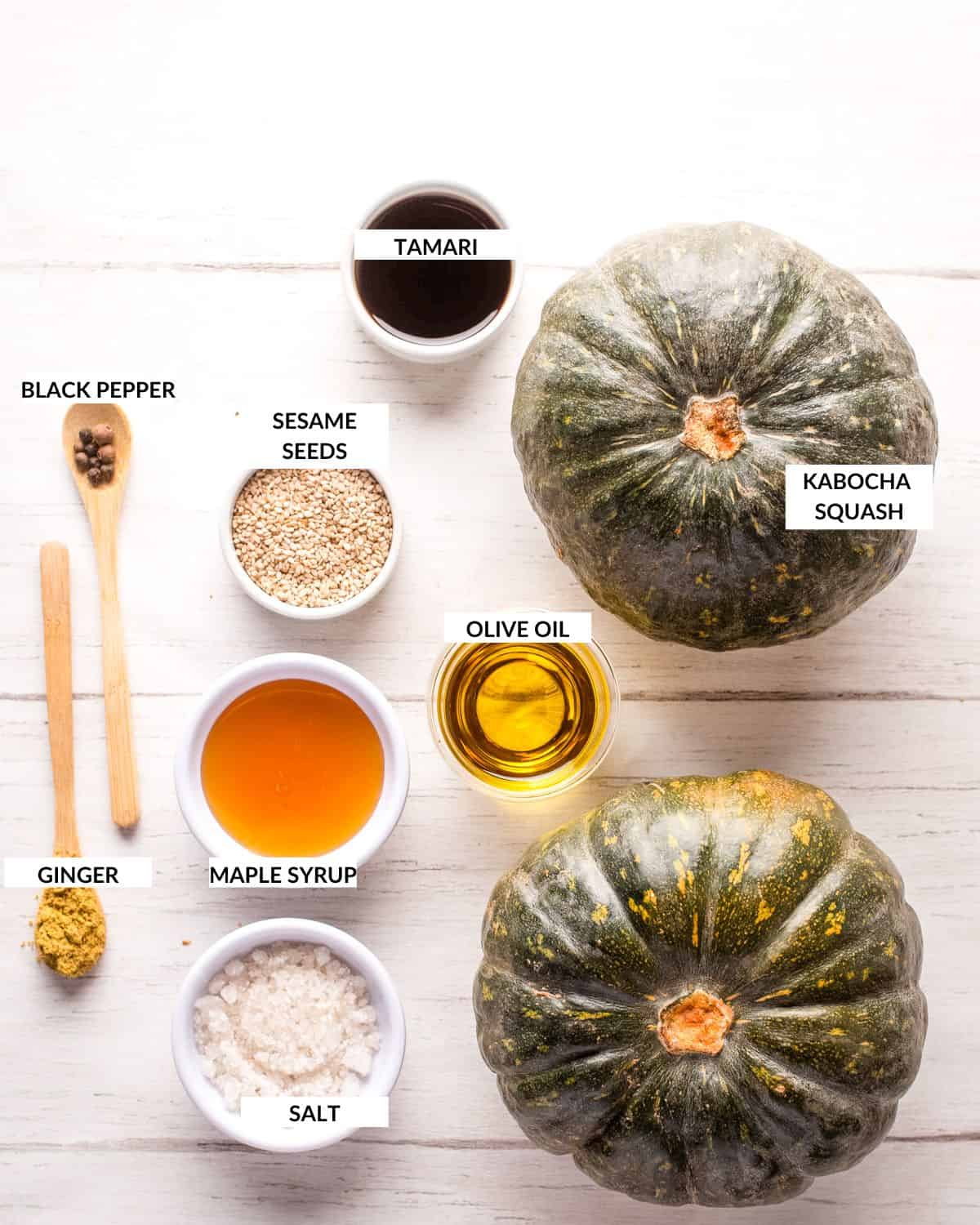
Picking Kabocha Squash
- Kabocha squash should be round with a hard, dark green outer skin and may have a yellow spot where it ripened.
- The inner flesh is a bright orange color with medium sized seeds.
- Choose one that is free of soft spots and is heavy for its size.
- Inspect the stem for any mold. This is not the same as bumpy skin, because there may be some hard, bumpy spots on the peel but that's normal and fine to buy!
Flavor Variations
- Good old salt and pepper! Sometimes, simple is the best. The sweetness and nuttiness of this squash makes it super easy to just devour without much else.
- Japanese-inspired flavor profile with soy sauce, ginger, and sesame seeds (which is what this recipe uses). You can also try roasted kabocha squash with my Japanese sesame dressing! Absolutely delicious.
- Korean-inspired flavor profile with a gochujang + tahini marinade. Check out the marinade used in my roasted whole cauliflower recipe!
📖 How to roast kabocha squash
How to cut kabocha squash into even slices
Use a sharp knife to cut the squash in half down the middle. Typically, I take the little stem off and then use the soft part to drive in the knife from the stem end.
Pro-Tip: If you have a big old cleaver style knife, you can use it!
If your knife isn't very sharp, you may need to use a sawing motion to get through the thick skin of the squash. See the tips in the next section if you need some more help here.
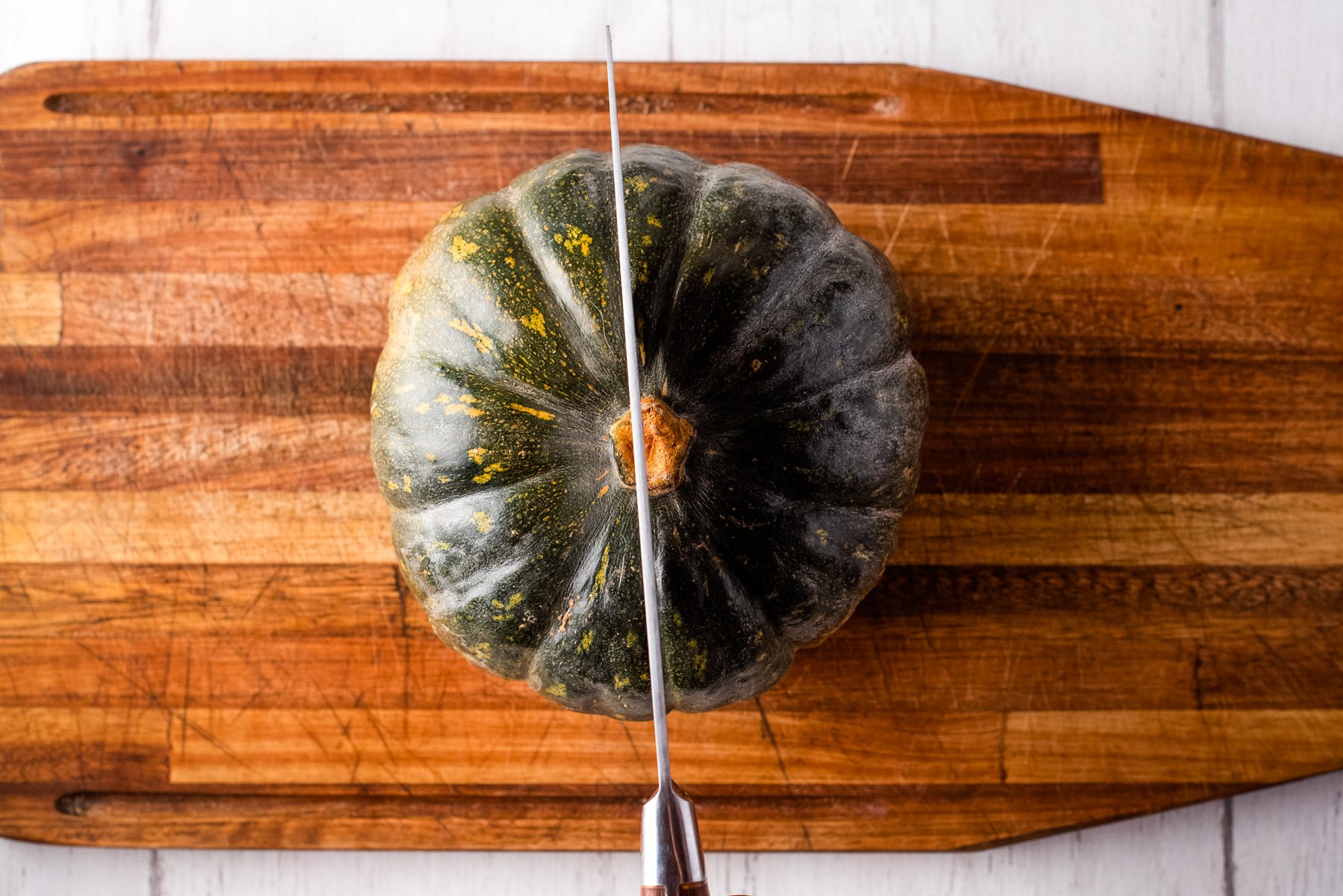
Then use a spoon or an ice cream scoop to remove seeds and stringy insides from the squash halves. Slice into thick slices (~1 ½ inch wedges).
Pro Tip: Kabocha seeds are very much like pumpkin seeds, so if you want a tasty and healthy snack, just clean out the stringy parts and then toss the seeds in some olive oil or avocado oil and roast them!
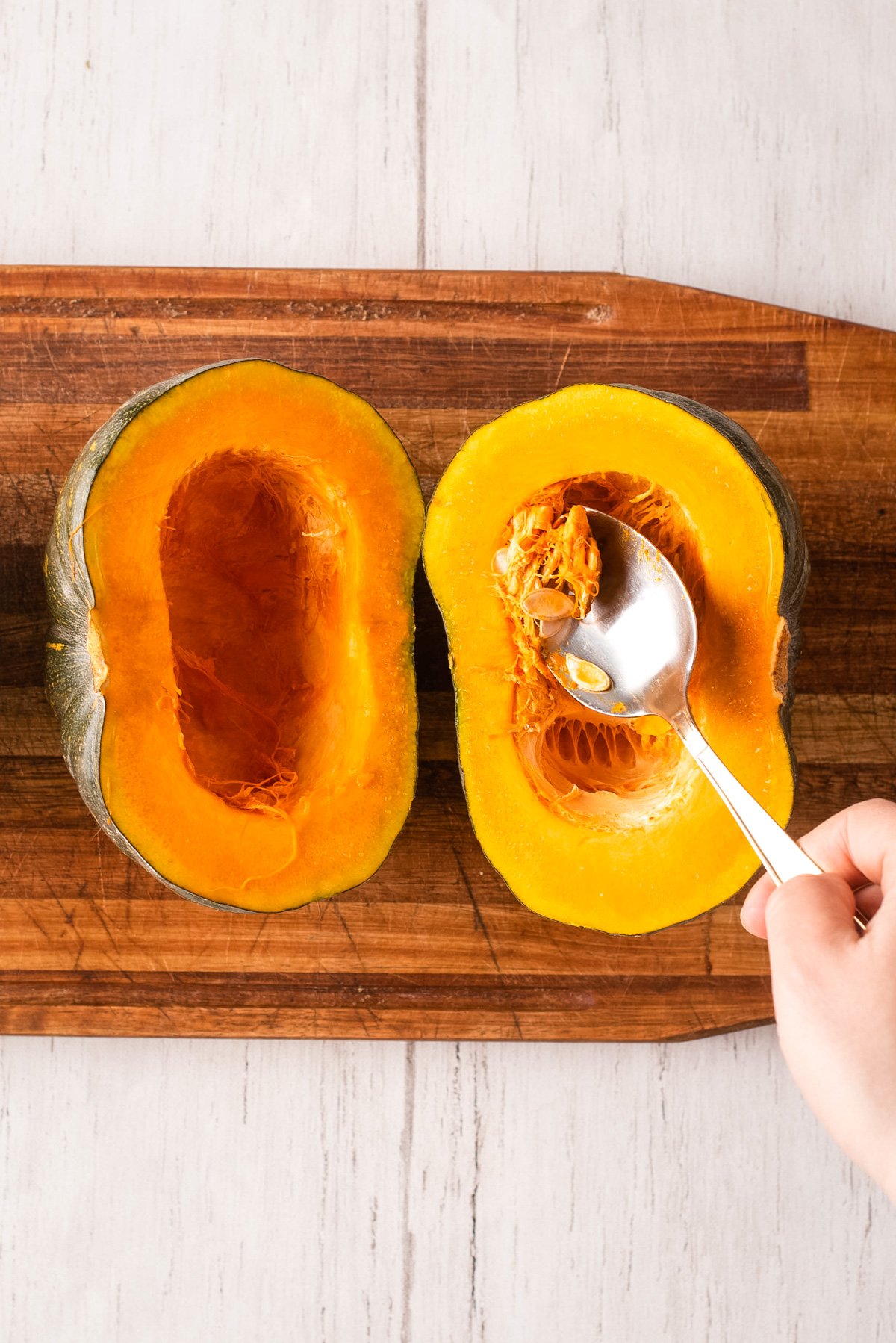
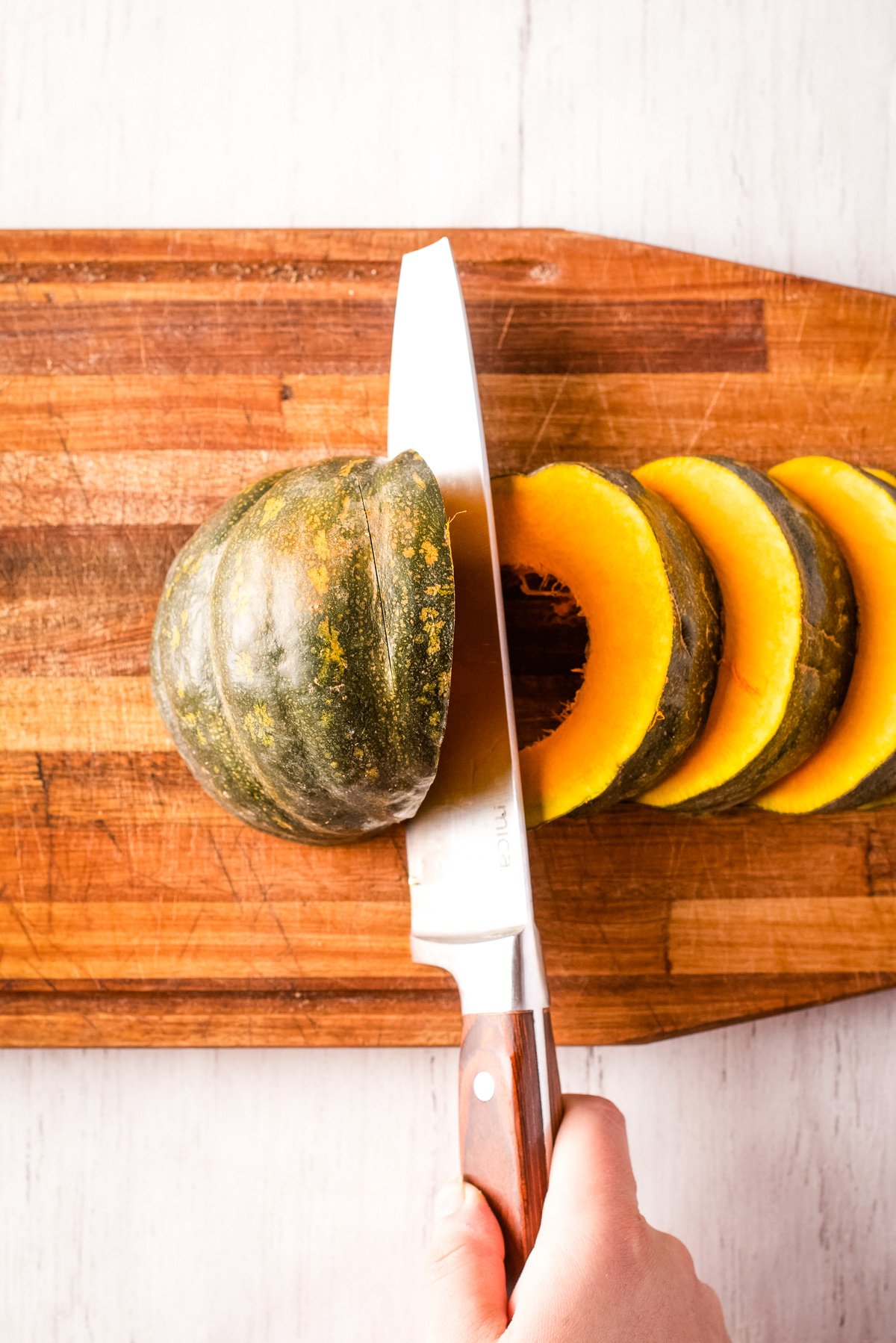
Season and roast!
Preheat the oven to 400°F
Use a medium to a large bowl to toss the squash, olive oil, salt, and pepper.
Place the slices on a rimmed baking sheet in an even single layer, and roast for about 10 minutes.
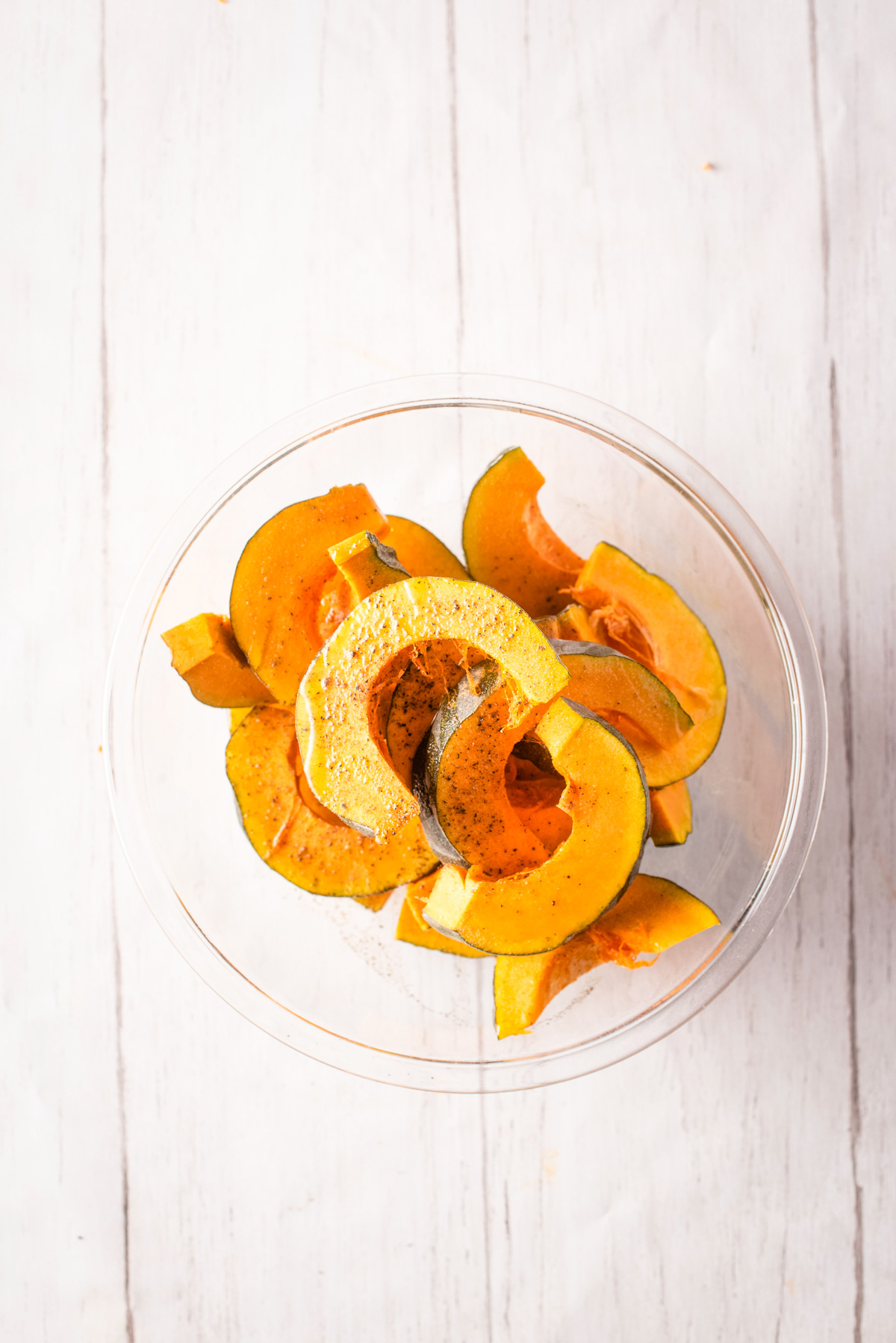
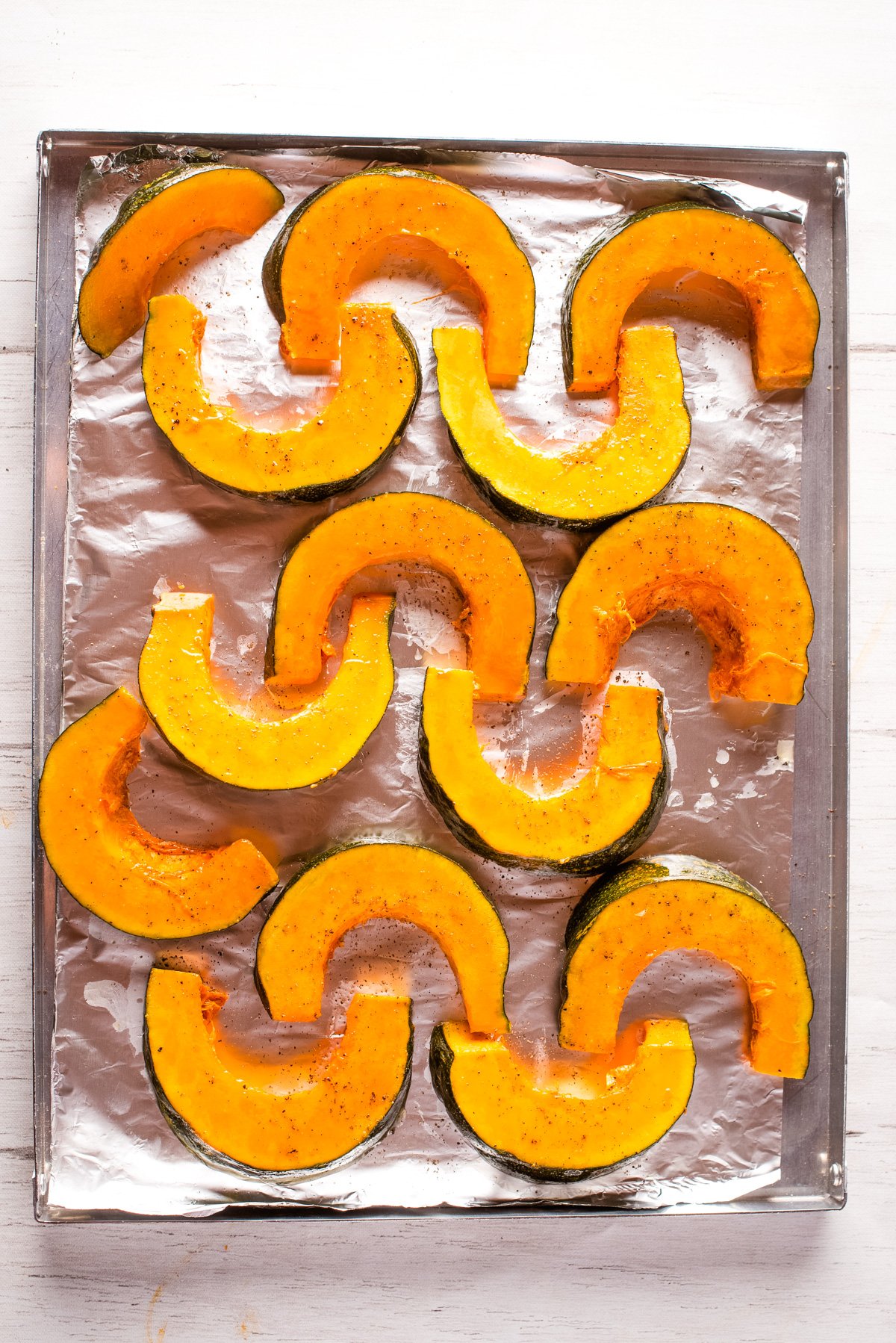
Use a small to medium bowl to combine soy sauce, honey and ginger. Then use a kitchen brush to spread the honey sauce over the slices.
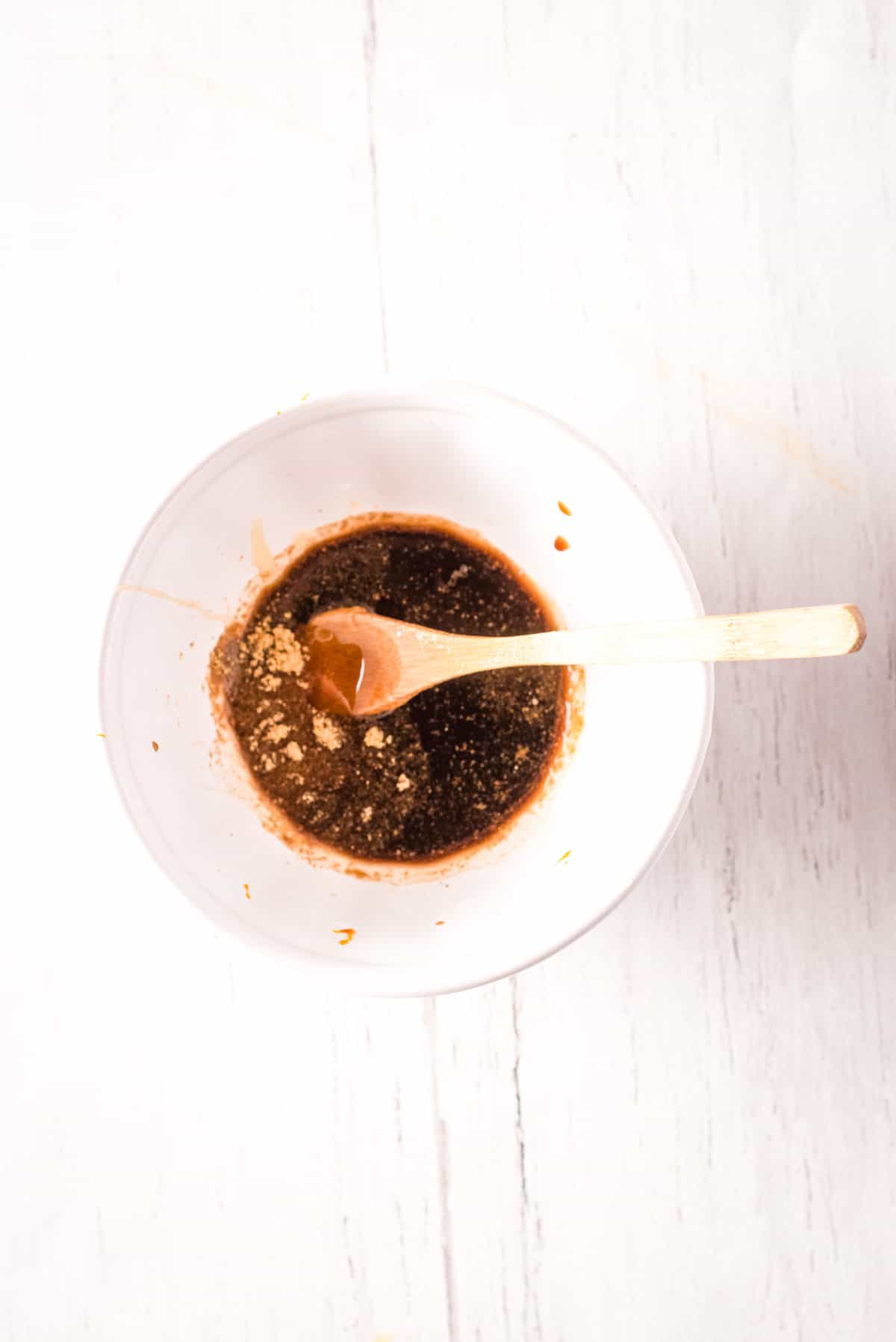
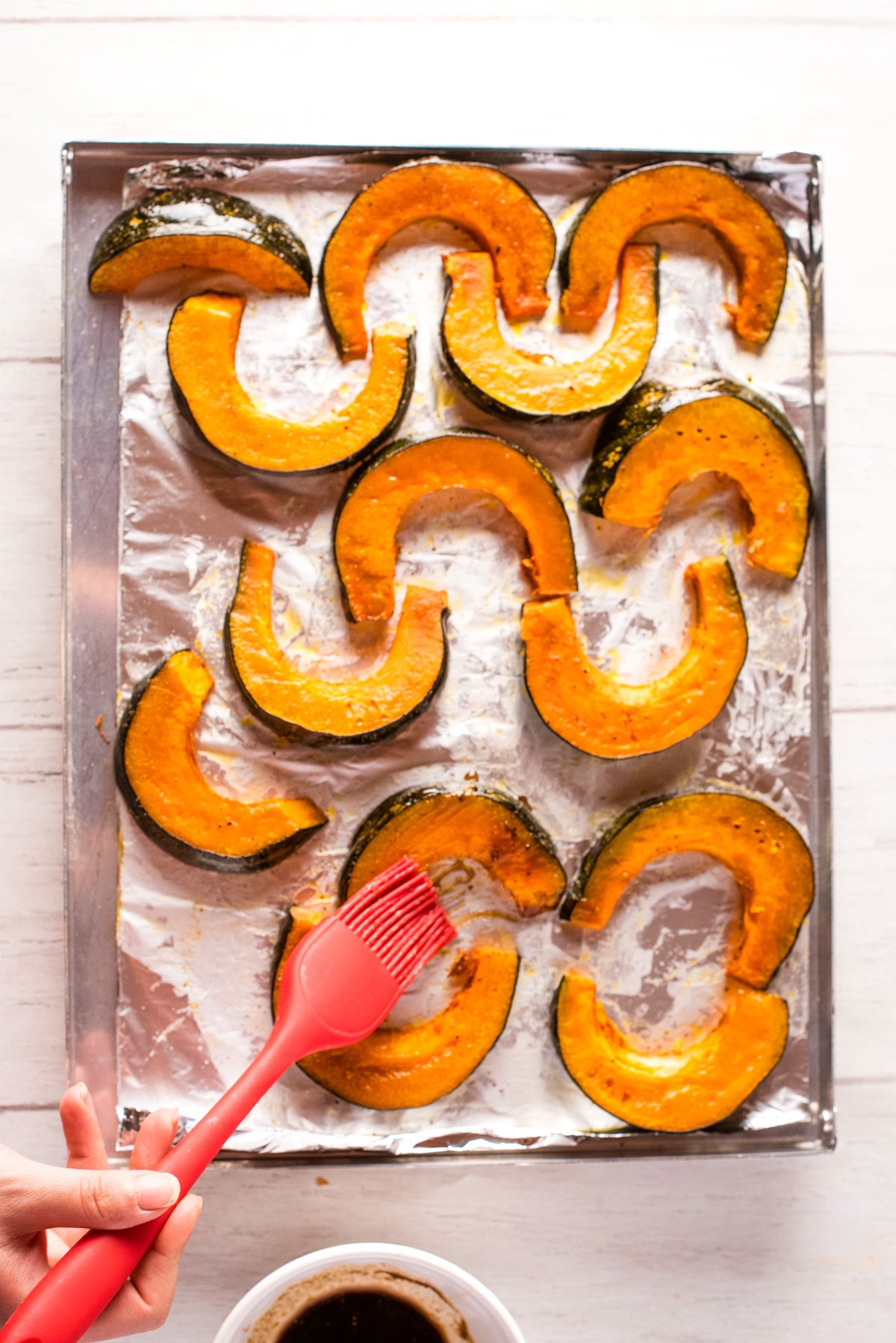
Roast for about 10 minutes or until golden brown and fork tender. Garnish with sesame seeds, serve and enjoy!

👩🏽🍳Top tips and Troubleshooting FAQs
Tips to Cut Kabocha Squash
Kabocha squash is notorious for its hard outer shell. So, please be careful while you're cutting it in half!
- Invest in a sharp cooking knife, and make sure to sharpen it often! I use this chef's knife, and I've had it for almost 10 years. Investing in a good knife like this will save you a lot of stress down the line!
- If you're planning to puree the squash or make soup with it, just put the squash in the oven cold. This can sometimes allow the heat to penetrate the squash more easily and prevents the flavors from getting lost in steam.
- Typically, slicing off the top and bottom of the squash so it has flat surfaces to sit on can help. You can then use a sharp knife to cut it in half, top to bottom.
- Another tip here is to poke a few holes in the outer surface, and then pop it in the microwave for a minute or two until it softens a bit. Then, you can cut it much easier.
Common FAQs about Kabocha Squash
Kabocha squash is a Japanese pumpkin (or sometimes called a Korean pumpkin or danhobak). It's a sweet autumn squash variety that has a delicious, sweet and nutty flavor. It can be used in sweet or savory dishes.
It can be a bit challenging to clean due to its tough skin. Cut the squash in half with a sharp knife. If the skin is particularly tough, you may need to use a serrated knife. Scoop out the seeds and stringy flesh from the center of the squash. A spoon or ice cream scoop works well for this. If you don't want to eat the skin (though it's perfectly edible!) you can then use a vegetable peeler or paring knife to remove the skin from the flesh of the squash. You can also steam or boil the squash before peeling!
Yes, the skin is edible! In fact, it's quite delicious. Roasting brings out the natural sweetness of the squash, and the edible skin provides a lovely contrast in texture. It's perfectly safe to eat, so there's no need to peel it before enjoying. Just be sure to give it a good wash first.
Yes! In fact, steamed kabocha squash is much more moist and tender than roasted kabocha. This is also a traditional way to serve kabocha squash in many parts of Korea.
🍴 Serving and storage suggestions
Roasted kabocha squash will last 3-4 days in the fridge in an airtight container, or 2-3 months in the freezer. I love storing the squash in these food storage containers. I find that they tend to stay fresh longer this way, even in the fridge! Uncooked, and uncut squash will stay fresh for up to 3-4 months in a cool, dry place (like a pantry!) But you should discard it if it becomes soft, squishy, or moldy!
You can serve this kabocha squash a few different ways. My favorites are below, but check out 25+ delicious kabocha squash recipes for more ideas!
If you like this recipe, check out my other amazing squash recipes:
If you tried this recipe, don't forget to comment and rate! ⭐⭐⭐⭐⭐
📖 Recipe
Roasted Kabocha Squash
Ingredients
- 1 lb kabocha squash
- 3 tablespoons olive oil
- ¼ teaspoons black pepper
- pinch of salt
- 3 tablespoons maple syprup, substitute honey if not vegan
- 1 ½ teaspoons tamari, substitute soy sauce if not gluten-free
- 1 teaspoon ground ginger
- 2 teaspoons sesame seeds
Instructions
- Use a sharp knife to carefully cut the squash in half down the middle. Then use a spoon to take off the seeds inside each half. Then slice into 1½ inch slices.
- Preheat the oven to 400°F.
- Use a medium to a large bowl to toss the squash, olive oil, salt, and pepper.
- Place the slices on the baking sheets and roast for about 10 minutes.
- Use a small to medium bowl to combine soy sauce, maple syrup and ginger. Then use a kitchen brush to spread the honey sauce over the slices.
- Roast for about 10 minutes or until golden brown.
- Drizzle with sesame seeds, serve and enjoy!
Notes
- Make sure to select a ripe squash. You can tell a kabocha squash is ripe when it's deep green in color and feels heavy for its size. Avoid squash with any blemishes or soft spots.
- Cut your squash into even pieces. This will help it cook evenly and prevent burning.







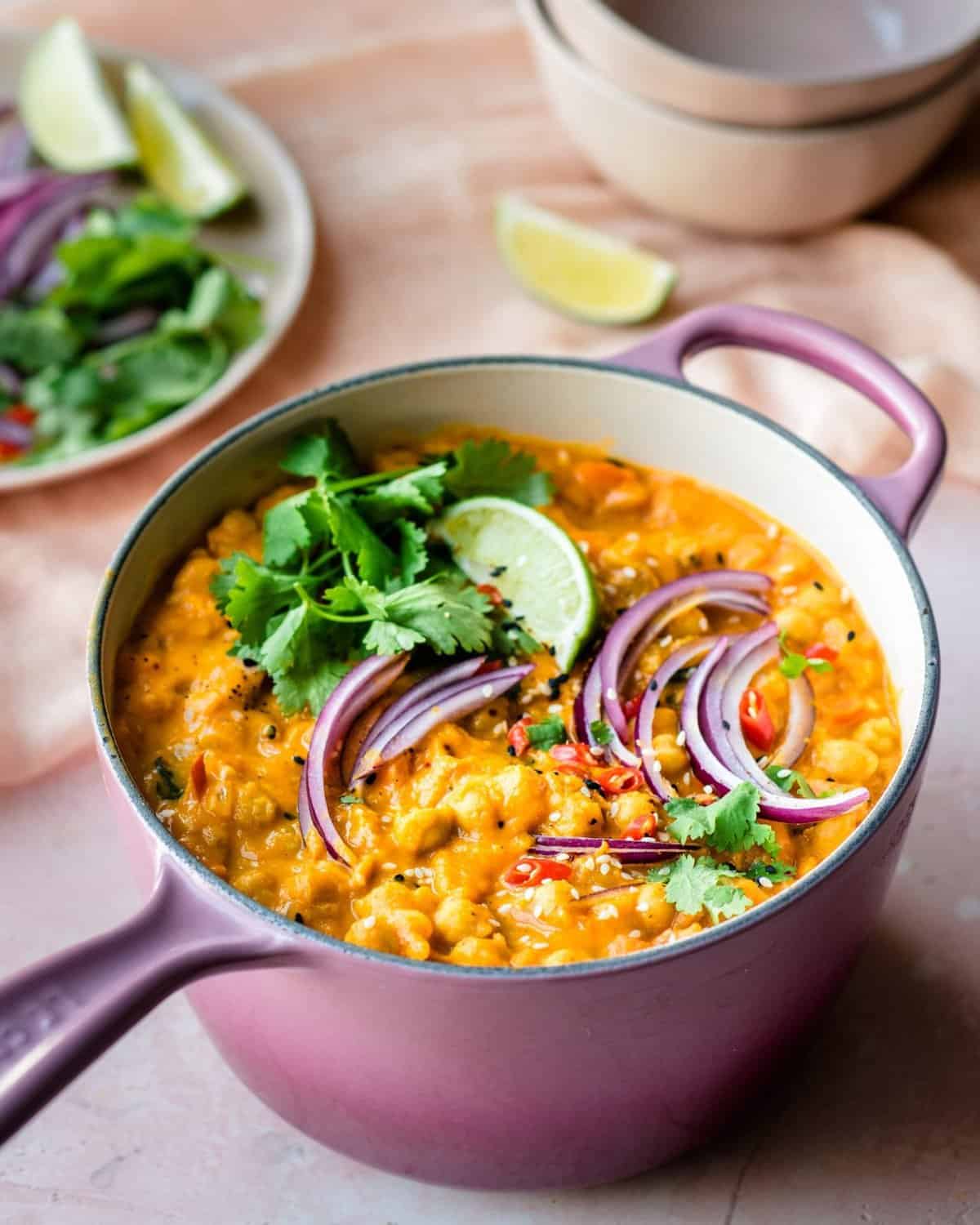
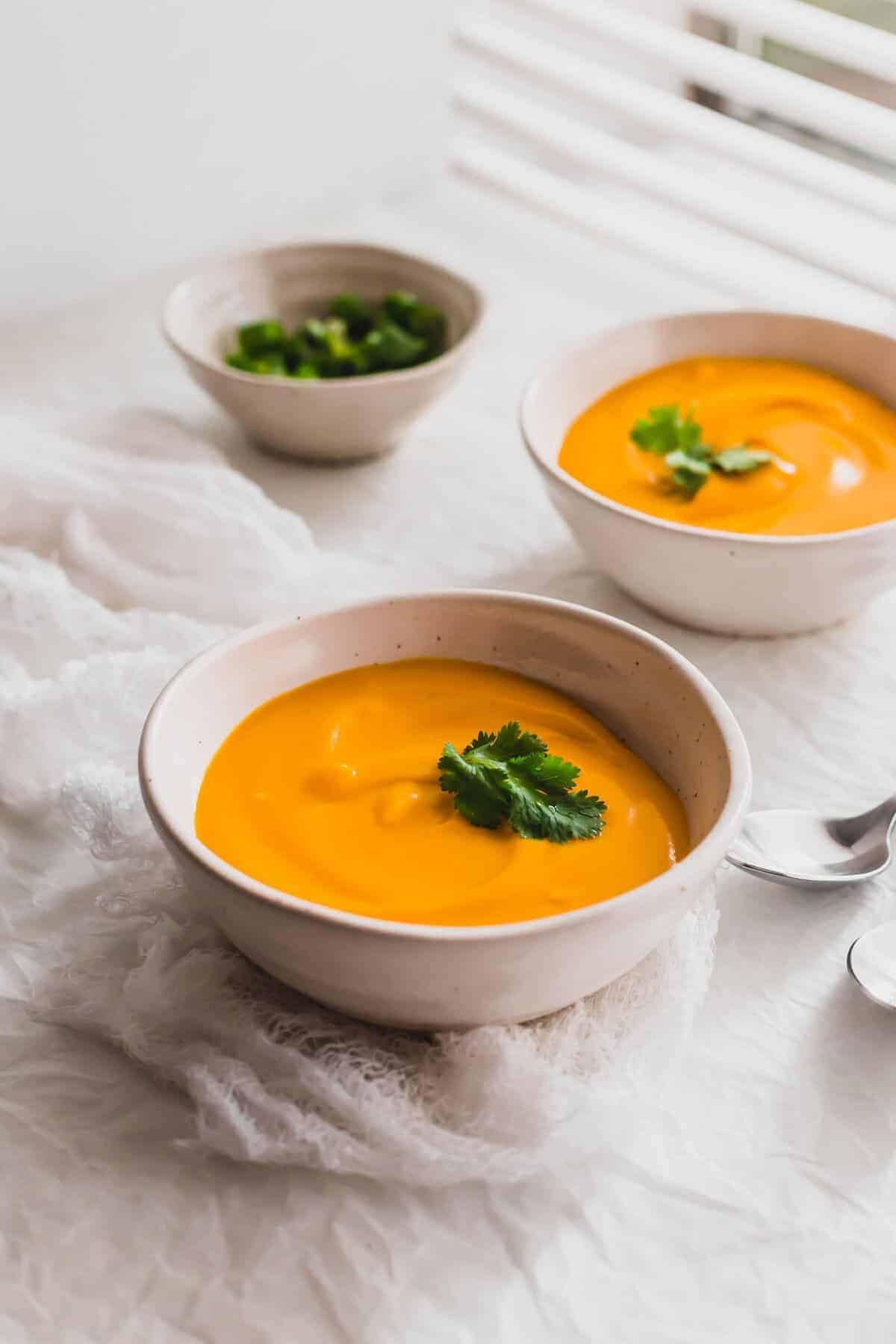
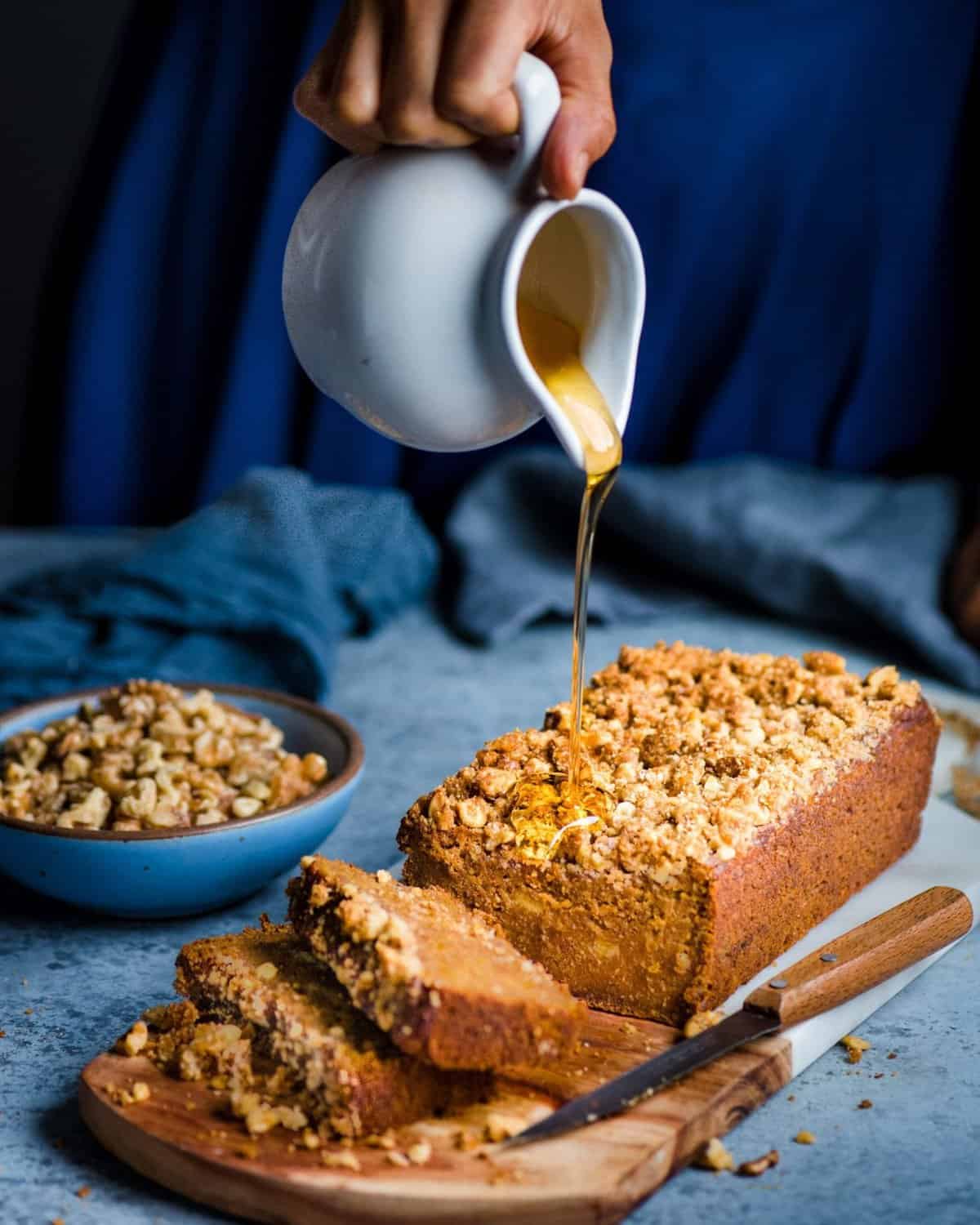
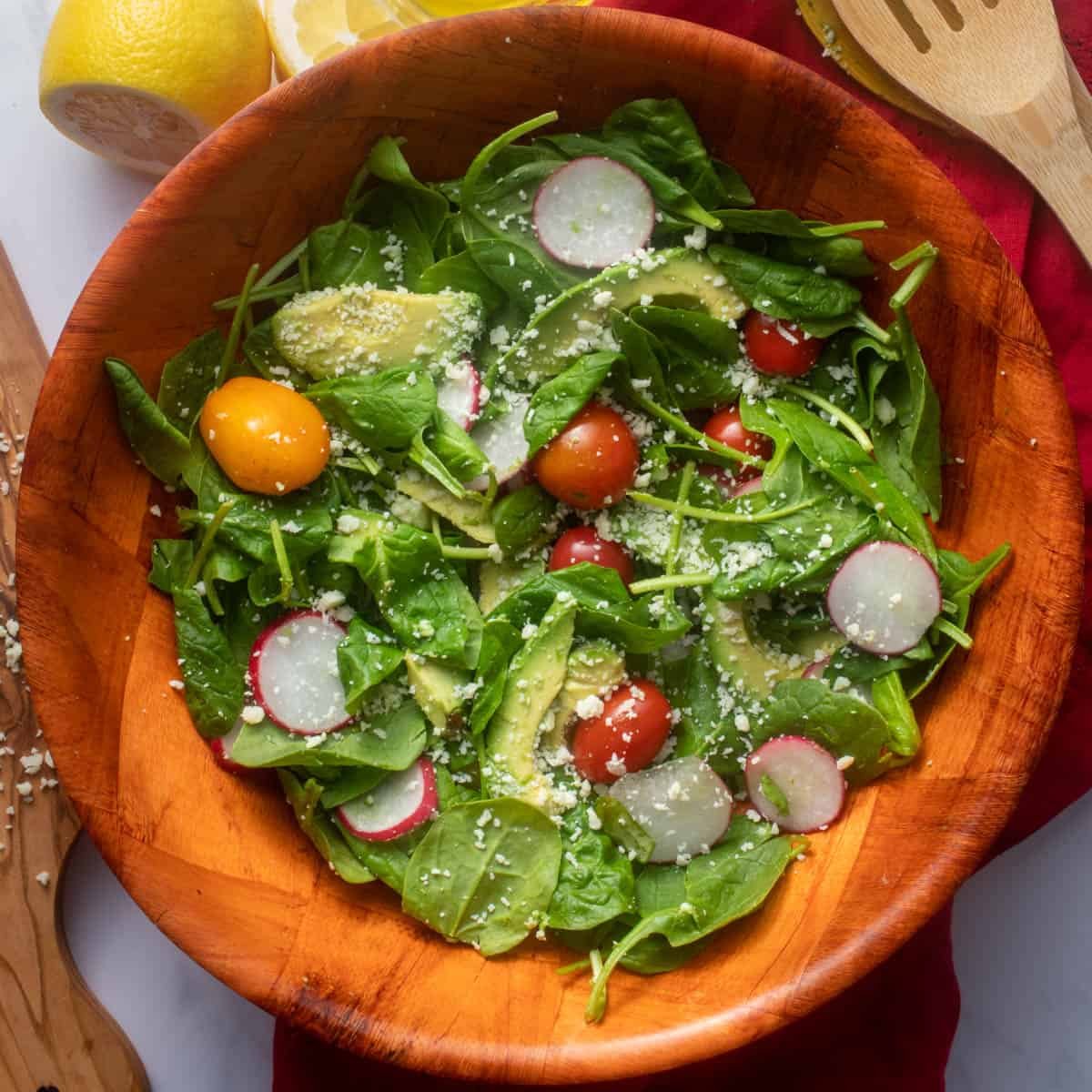
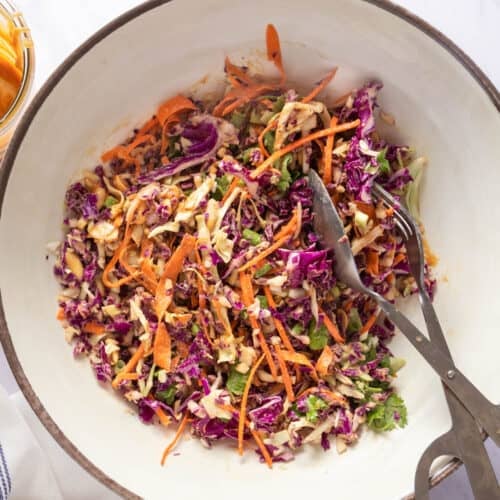
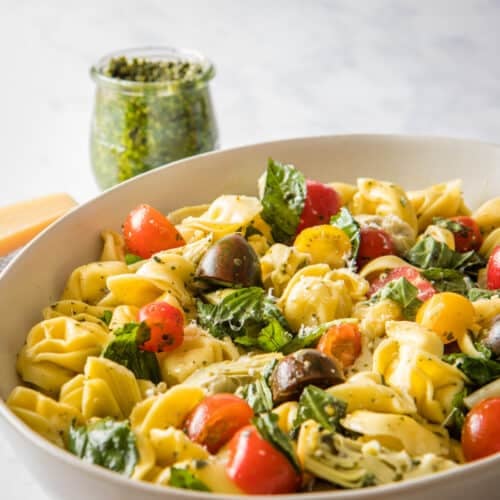
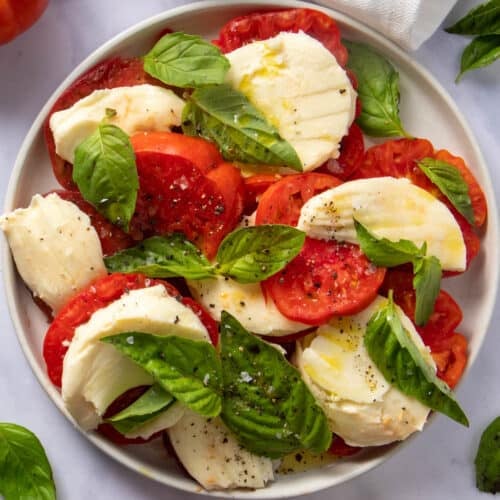
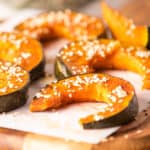








What a great idea to add tamari to the recipe! It really makes the dish taste special. Delicious.
Kids love the buttery flavor of this roast kabocha squash! It is packed with flavors, incredibly delicious and pleasing!
Roasting this squash with the ginger in it made it come out not only soft but almost indulgent! Kiddos loved it.
One of my favorite recipes to cook kabocha squash is roasted, With this recipe the result was perfect! Thanks for all the tips.
Love kabocha! I buy it all year round when I can find it and roasting is the easiest and most delicious way to enjoy it! Loved the seasoning combination in this recipe and don't think I'll be making it differently again!